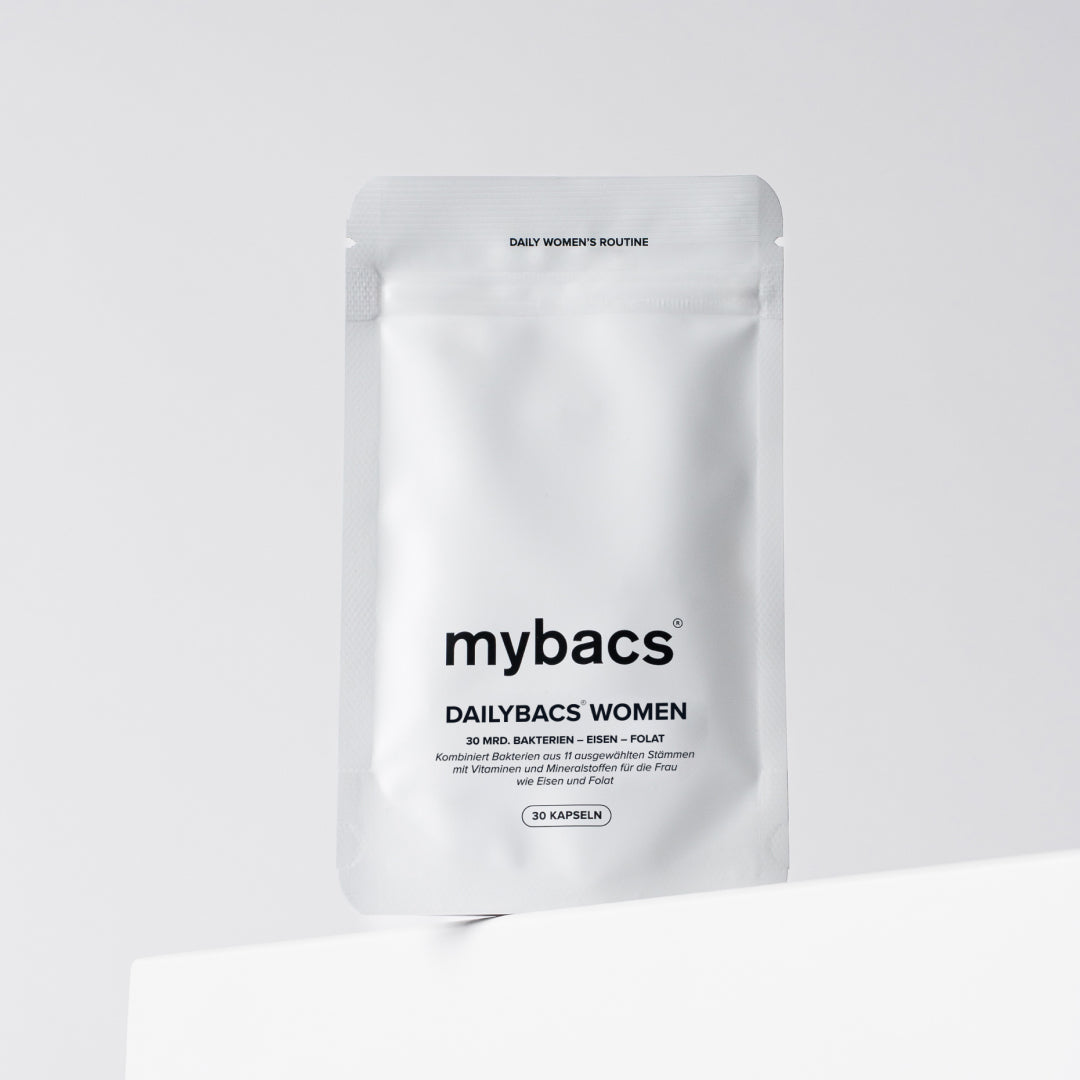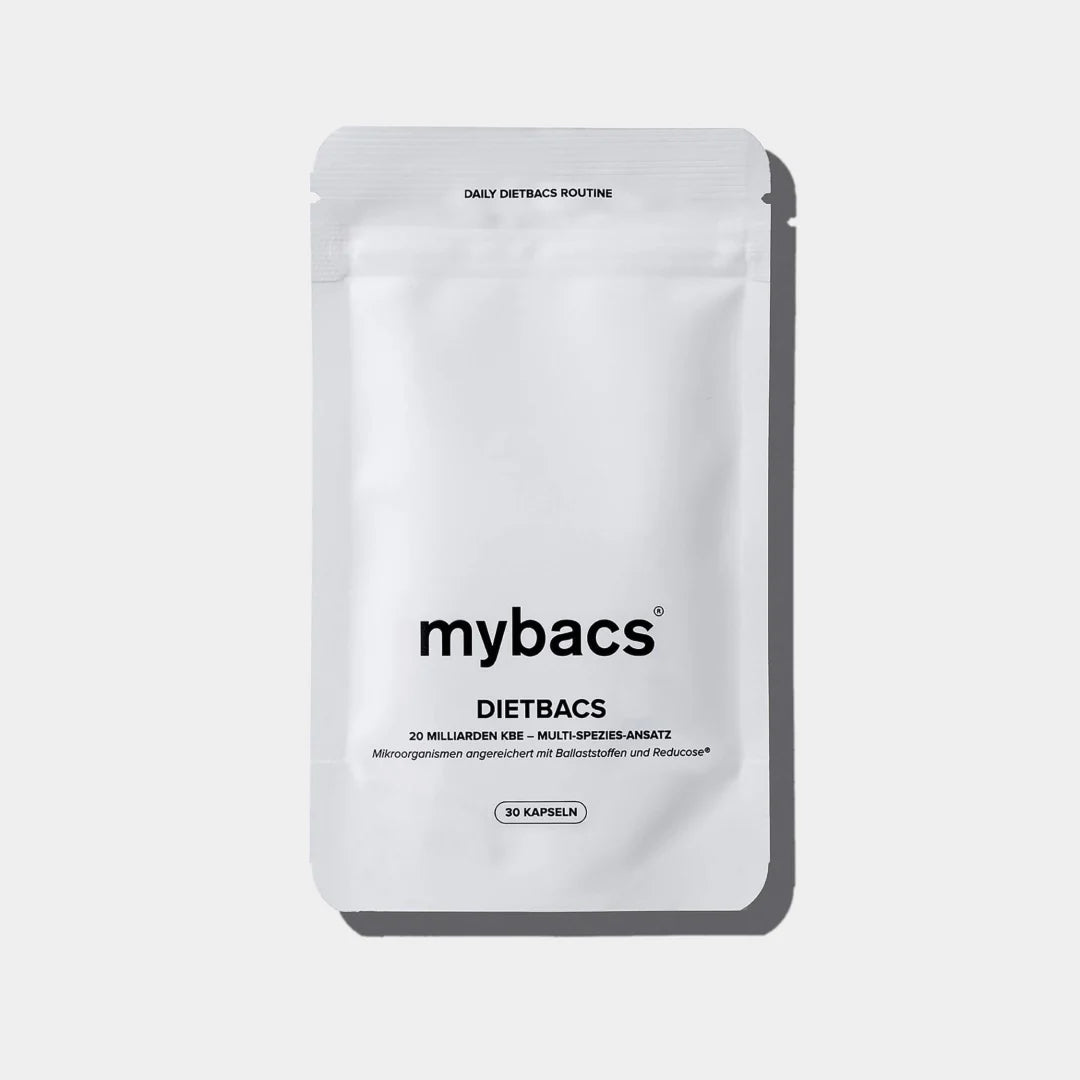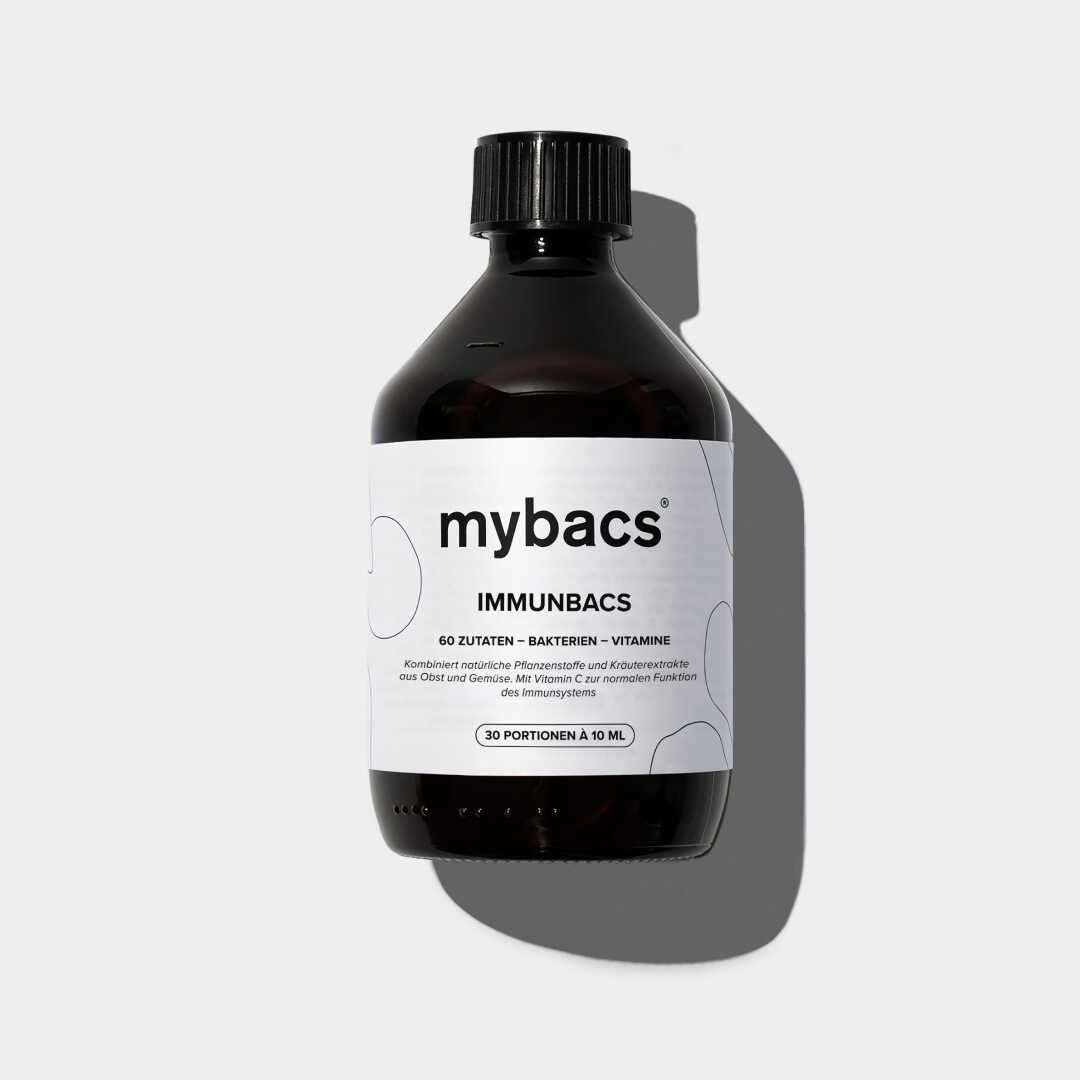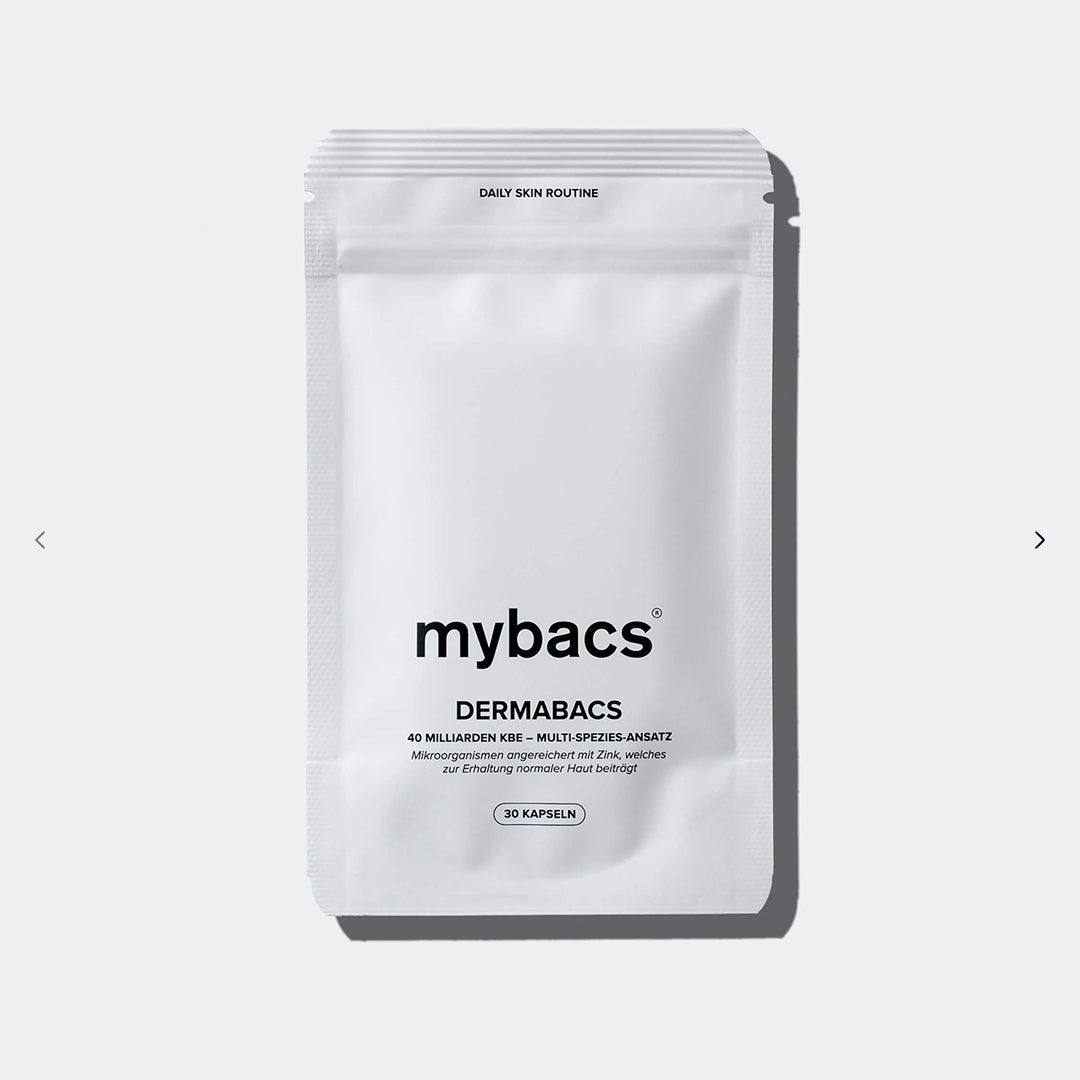Nutrients Guide
Our products are optimized for your needs through extensive research and superior bioavailability. Bioavailability describes what percentage of a nutrient or active ingredient actually reaches the organism and can work there. It is important to us to inform you about the selected ingredients and effects, because we stand for more clarity in the confusing world of dietary supplements. We only use the best quality, natural components, sustainably and regionally produced. You can find a detailed overview of our ingredients, their origins and effects here:
VITAMINS
| Vitamin A (retinol) |
Vitamin A is a fat-soluble vitamin that is found exclusively in animal foods and in plant foods only as a precursor in the form of beta-carotene (provitamin). In the body, beta-carotene is converted into vitamin A. Vitamin A consists of various compounds, including retinol, retinal and retinoic acid. The vitamin contributes to normal iron metabolism, as well as to the maintenance of normal mucous membranes, skin and vision. |
| Vitamin B1 (thiamine) |
Vitamin B1 - also known as thiamine - is the precursor of thiamine pyrophosphate (TPP, TDP). Almost every organ and tissue contains vitamin B1. It contributes to the normal functioning of the nervous system and energy metabolism. Vitamin B1 also contributes to normal heart function. |
| Vitamin B2 (riboflavin) |
Vitamin B2, also known as riboflavin, is one of eight B vitamins that performs various functions in the body. It contributes to the maintenance of normal skin and mucous membranes and energy metabolism. Vitamin B2 is present in dairy products, eggs and meat and is only found in small amounts in vegan foods and has low bioavailability. In addition, the vitamin is sensitive to light and can lose its effectiveness if stored in incorrect conditions. |
| vitamin B5 (pantothenic acid) |
Vitamin B5 (pantothenic acid) is a component of coenzyme A and contributes to normal energy metabolism in the body. Pantothenic means "everywhere". It contributes to normal mental performance and is also important for the synthesis and metabolism of steroid hormones, vitamin D and some neurotransmitters. |
| Vitamin B6 (pyridoxine) |
Vitamin B6 (pyridoxine) is the precursor of pyridoxal phosphate (P5P). This coenzyme is probably unfamiliar to most people, but it is one of the most essential coenzymes in the human body. It contributes to the normal functioning of the nervous system and supports energy metabolism. Pyridoxine also plays a role in the normal formation of red blood cells and the regulation of hormone levels. In addition, vitamin B6 contributes to normal protein and glycogen metabolism and also supports the normal function of the immune system and helps reduce tiredness and fatigue. |
| Vitamin B7 (biotin) |
Biotin is one of the water-soluble B vitamins and contributes to the normal maintenance of skin and hair. |
| Vitamin B9 (folic acid / active folate) |
Active folate is a water-soluble vitamin and should not be confused with folic acid - because, unlike bioactive folate, folic acid does not occur naturally. Folic acid is synthetically produced and must first be converted into active folate by the body. We use active folate in our formulations to maintain the naturalness of our capsules. |
| Vitamin B12 (cobalamin) |
Vitamin B12, also known as cobalamin, must be absorbed by mucous membrane cells in the small intestine in order to enter the bloodstream. To do this, the vitamin requires the so-called intrinsic factor, a special protein produced by the stomach lining. Vitamin B12 is stored primarily in the liver and contributes to normal energy metabolism. Vitamin B12 also contributes to a normal immune system and reduces tiredness and fatigue. In addition, vitamin B12 is found in mainly animal foods. Vegans and vegetarians should therefore pay particular attention to their supply (a vitamin B12 food supplement is strongly recommended by vegan organizations). |
| Vitamin C (ascorbic acid) |
Vitamin C, also called ascorbic acid, belongs to the group of water-soluble (hydrophilic) vitamins. It is associated with many health benefits, such as reducing fatigue and improving iron absorption. |
| Vitamin D3 (calciferol) |
Vitamin D is also called the "sunshine vitamin" because it is produced by the skin in response to sun exposure. It is a fat-soluble vitamin in a family of compounds that includes vitamins D-1, D-2 and D-3. Your body produces vitamin D naturally when it is directly exposed to sunlight. Since the body depends on sunshine for vitamin D production (main supply of 75-90%) and can hardly absorb it from food, deficiency can occur more quickly, especially in Central European winters. UV protection can also impair the absorption of vitamin D, so care should be taken to ensure sufficient levels of the vitamin in the blood. Vitamin D is converted by the body into a hormone that controls a variety of bodily functions. Among other things, it contributes to the normal function of the immune system and to the normal absorption/utilization of calcium and phosphorus. |
| Vitamin E (tocopherol) |
From a chemical perspective, vitamin E actually encompasses an entire vitamin group, which consists of eight different units - half tocopherols and the other half tocotrienols. These can be divided into alpha, beta, gamma and delta. Research has shown that alpha-tocopherol is the most powerful form and can therefore best cover human needs. Vitamin E helps to protect cells from oxidative stress. |
PLANT EXTRACTS
| millet extract |
Millet is better known as a food used in cooking. Millet is one of the oldest staple foods and comes from Asia. By the end of antiquity, despite its distant origins, it had become widespread throughout Europe and was even praised by the philosopher Pythagoras and by Attila, King of the Huns. |
| blueberry extract |
Of which anthocyanins: Extracts of blueberry (Vaccinium myrtillus) are a valuable source of bioactive plant substances such as provitamin A, vitamin B2 and zinc. |
| saffron extract |
Saffron is considered the most precious spice in the world. Even a small amount of the bright red threads is enough to give dishes their special golden color and unique aroma. We use a patented, standardized saffron extract (affron®), obtained from the pistil of the Crocus sativus with >3.5% lepticrosalides. |
| cat's claw extract |
The cat's claw (Uncaria tomentosa) is a special type of liana that originally comes from South America. It grows from the Amazon rainforest in Peru to the diverse natural areas of Bolivia and Brazil. Its roots reach deep into the past. According to legend, the plant has been used by the Inca Indians for thousands of years as a remedy for infections and chronic inflammations. The cat's claw, whose sickle-shaped adhesive organs are reminiscent of cat's claws, was officially recognized as a medicinal plant by the WHO as early as 1994. |
| grape seed extract |
Of which polyphenols and OPC: Grape seed extract contains a high proportion of the secondary plant substances oligomeric proanthocyanidins (OPC). OPC is also known as vitamin P and belongs to the group of flavonoids. |
| Ashwagandha extract |
The Ashwagandha root (Withania somnifera) provides a valuable plant extract that has been deeply rooted in Ayurvedic practices for thousands of years and is used in traditional Indian plant-based medicine for a wide variety of health areas. |
| beta-carotene (provitamin A) |
Beta-carotene, or provitamin A, is a secondary plant substance that belongs to the group of carotenoids. Strictly speaking, carotenoids are pigments that occur naturally primarily in fruit and vegetables. They are characterized by their bright orange color, which is found in carrots and apricots, for example. Significant concentrations of beta-carotene can also be found in red and deep green fruits and vegetables (e.g. spinach, peppers and tomatoes). They act as one of the most important sources of vitamin A. |
| lemon balm extract |
Melissa extract, also known as lemon balm extract, is extracted from the leaves of the lemon balm (Melissa officinalis). This herbal extract has been used in traditional medicine for centuries. |
| lavender flower extract |
The beneficial effects of lavender have been known since ancient times. So much so that true lavender (Lavendula angustifolia) was voted “Medicinal Plant of the Year” in 2020. |
| Maca root powder | The Maca root is rich in calcium and potassium and contains many essential trace elements such as iron, zinc, iodine, copper and manganese. |
| Guarana |
Guarana is an herbal product derived from the seeds of the guarana plant (Paullinia cupana), which is found mainly in the Amazon region of Brazil. Guarana seeds have a long history in indigenous medicine in South America and are often used as a natural stimulant. The main component of guarana is caffeine, which is present in higher concentrations in the seeds than in coffee beans. |
| L-Theanine (Matcha) |
L-theanine is a natural amino acid found mainly in the leaves of green and white tea. |
| Green tea extract (epigallocatechins-3-gallate (EGCG)) |
Green tea extract, specifically epigallocatechin gallate (EGCG), is a highly studied plant extract derived from the leaves of the Camellia sinensis plant, which is also used to make green tea. It contains a high concentration of polyphenols, which are thought to be responsible for many of the potential health benefits of green tea. |
| curcumin extract |
Curcumin extract is a dietary supplement derived from the Curcuma longa plant, also known as turmeric. Turmeric is a yellowish spice plant grown primarily in India and other parts of Asia and is often used in traditional Indian medicine Ayurveda. The main component of curcumin extract is curcumin, a natural polyphenol that is responsible for the bright yellow color of turmeric powder. Curcumin has received a lot of attention in recent years due to its potential health benefits. |
| alfalfa extract |
Alfalfa extract is derived from the alfalfa plant (Medicago sativa), also known as lucerne or alfalfa grass. This plant belongs to the legume family and is popular due to its high nutrient content and wide range of uses in traditional medicine and as a food source. Alfalfa extract contains a variety of nutrients such as vitamins (A, C, E, K), minerals (calcium, iron, magnesium) and phytonutrients (flavonoids, carotenoids). |
| pomegranate extract |
Pomegranate extract is extracted from the fruit of the pomegranate tree (Punica granatum), a plant that is grown in many regions of the world. Pomegranates are known for their sweet and sour taste and rich red color. Pomegranate extract is rich in various bioactive compounds such as polyphenols, particularly ellagitannins, anthocyanins and flavonoids. |
MINERALS
| zinc |
Zinc is an important trace element for our body, with a significant influence on the health and function of various body structures. It contributes, among other things, to normal cognitive function, normal fatty acid metabolism and normal protein synthesis. |
| selenium |
Selenium is also an important trace element. Selenium contributes to the maintenance of normal hair and nails. It also contributes to the normal functioning of the immune system and normal thyroid function. |
| copper |
Copper is an important trace element that is involved in a variety of functions in the body. It is a component of numerous enzymes and plays an important role in many chemical reactions in the body. It is particularly advisable to ensure that you have an adequate copper intake when taking zinc over a longer period of time. Copper contributes to the maintenance of normal connective tissue and normal hair and skin pigmentation. |
| iron |
Iron is a vital trace element that contributes to normal energy metabolism. Iron also contributes to the normal formation of red blood cells. Iron deficiency manifests itself in lethargy, lack of motivation and exhaustion, for example. Iron is found in both animal and plant foods, but the iron contained in plants (e.g. pulses) is less easily absorbed by the body because absorption is inhibited by the phytic acid in plants. This is why vegans and vegetarians are often affected by an inadequate supply of the trace element. Vitamin C and other bioactive substances ensure that iron absorption in the intestine is supported. |
| iodine |
Iodine is a mineral and belongs to the group of trace elements. It is a component of thyroxine, a thyroid hormone, and contributes to normal thyroid function. But the mineral is not only responsible for this -- iodine contributes to normal functioning of the nervous system and energy metabolism. |
| calcium |
Calcium contributes to normal energy metabolism and muscle function. Calcium is also needed to maintain normal bones. The body needs vitamin D to absorb calcium, so it is advisable to make sure you consume sufficient amounts of both. Did you know that the body cannot produce calcium itself? This is why the mineral must be obtained through diet. Dairy products such as cheese, milk and yogurt, but also fish and various vegetables such as broccoli and cabbage are rich in calcium. Especially if you follow a vegan diet or are lactose intolerant, it can be a good idea to supplement your diet with additional calcium. |
| choline |
Choline is a semi-essential micronutrient, or more precisely a so-called primary monohydric alcohol. Choline is essential for human life. However, since it can be produced from folic acid and methionine, it is considered semi-essential. In Europe, in contrast to the USA, choline is still relatively unknown in food supplements. Choline has various important functions and effects in the body. It contributes to normal fat metabolism and homocysteine metabolism. |
OTHER INGREDIENTS
|
L-tryptophan |
L-tryptophan is an essential amino acid, which means that it cannot be produced by the body itself and must be supplied. It is a precursor of the neurotransmitter serotonin and the hormone melatonin.
|
| melatonin |
Melatonin is a hormone that is naturally produced in the pineal gland in the brain when we are in a dark environment. Exposure to light, on the other hand, causes melatonin production to be reduced. Melatonin helps to shorten the time it takes to fall asleep and alleviates subjectively perceived jet lag symptoms. |
| probiotics |
Probiotics means “for life”. The word is derived from the Latin pro, “for”, which is followed by the ancient Greek bios, “life”. This actually explains a lot, because probiotics are living microorganisms that enter the organism primarily through the mouth. The microbiome refers to all microorganisms that live in and on our body - bacteria, viruses and fungi. |
| prebiotics |
Prebiotics are indigestible food components. These components can be identified primarily as long-chain carbohydrates. These long-chain carbohydrates cannot be broken down by the enzymes that we as humans produce during the digestive process. This means that they travel undigested and unharmed by stomach acid into the large intestine. Once there, they serve as food for the bacteria in our intestinal flora. What makes them so special is that prebiotics are only digestible by selected, health-promoting types of bacteria. In other words, prebiotics are in most cases dietary fiber - but not all dietary fiber counts as prebiotic. Only dietary fiber that serves as fuel for "good" bacteria can be called such. |
| inulin |
Inulin is a dietary fiber and can also be consumed in its pure form. Due to the extensive and intensive research into inulin, pure consumption is relatively widespread. |
| polyphenols |
Polyphenols are micronutrients that form naturally in leaves and fruits. They are packed with antioxidants and are among the most valuable ingredients in any plant. Organic compounds include substances such as flavonoids, tannic acid and ellagitannin. |
| caffeine |
Caffeine is a natural psychoactive substance found in various plants, including coffee beans, tea plants, cocoa beans, and kola nuts. It is one of the most commonly consumed stimulants in the world. |
If you have any further questions, please contact our customer support - we will be happy to help you.




